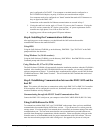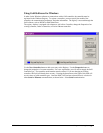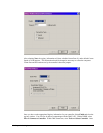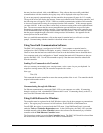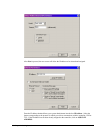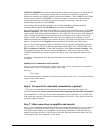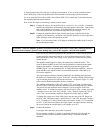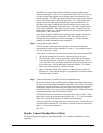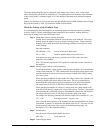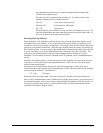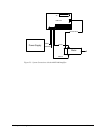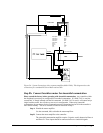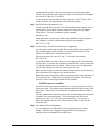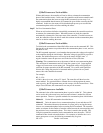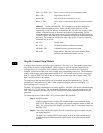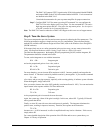
20 • Chapter 2 Getting Started DMC-3425
The motor and the amplifier may be configured in the torque or the velocity mode. In the torque
mode, the amplifier gain should be such that a 10 Volt signal generates the maximum required current.
In the velocity mode, a command signal of 10 Volts should run the motor at the maximum required
speed.
Step by step directions on servo system setup are also included on the WSDK (Windows Servo Design
Kit) software offered by Galil. See section on WSDK for more details.
Check the Polarity of the Feedback Loop
It is assumed that the motor and amplifier are connected together and that the encoder is operating
correctly (Step D). Before connecting the motor amplifiers to the controller, read the following
discussion on setting Error Limits and Torque Limits.
Step A. Set the Error Limit as a Safety Precaution
Usually, there is uncertainty about the correct polarity of the feedback. The wrong
polarity causes the motor to run away from the starting position. Using a terminal
program, such as DMCSmartTerm, the following parameters can be given to avoid
system damage:
Input the commands:
ER 2000,2000 <CR> Sets error limit to be 2000 counts
OE 1,1 <CR> Disables amplifier when excess error exists
If the motor runs away and creates a position error of 2000 counts, the motor
amplifier will be disabled.
Note: This function requires the AEN signal to be connected from the controller to
the amplifier.
Step B. Setting Torque Limit as a Safety Precaution
To limit the maximum voltage signal to your amplifier, the DMC-3425 controller has
a torque limit command, TL. This command sets the maximum voltage output of the
controller and can be used to avoid excessive torque or speed when initially setting
up a servo system.
When operating an amplifier in torque mode, the voltage output of the controller will
be directly related to the torque output of the motor. The user is responsible for
determining this relationship using the documentation of the motor and amplifier.
The torque limit can be set to a value that will limit the motors output torque.
When operating an amplifier in velocity or voltage mode, the voltage output of the
controller will be directly related to the velocity of the motor. The user is responsible
for determining this relationship using the documentation of the motor and amplifier.
The torque limit can be set to a value that will limit the speed of the motor.
For example, the following command will limit the output of the controller to 1 volt:
TL 1 <CR> Sets torque limit to 1 Volt on A axis
Note: Once the correct polarity of the feedback loop has been determined, the torque
limit should, in general, be increased to the default value of 9.99. The servo will not
operate properly if the torque limit is below the normal operating range. See
description of TL in the command reference.
Step C. Disable motor
Issue the motor off command to disable the motor.
MO <CR> Turns motor off
Step D. Connecting the Motor



